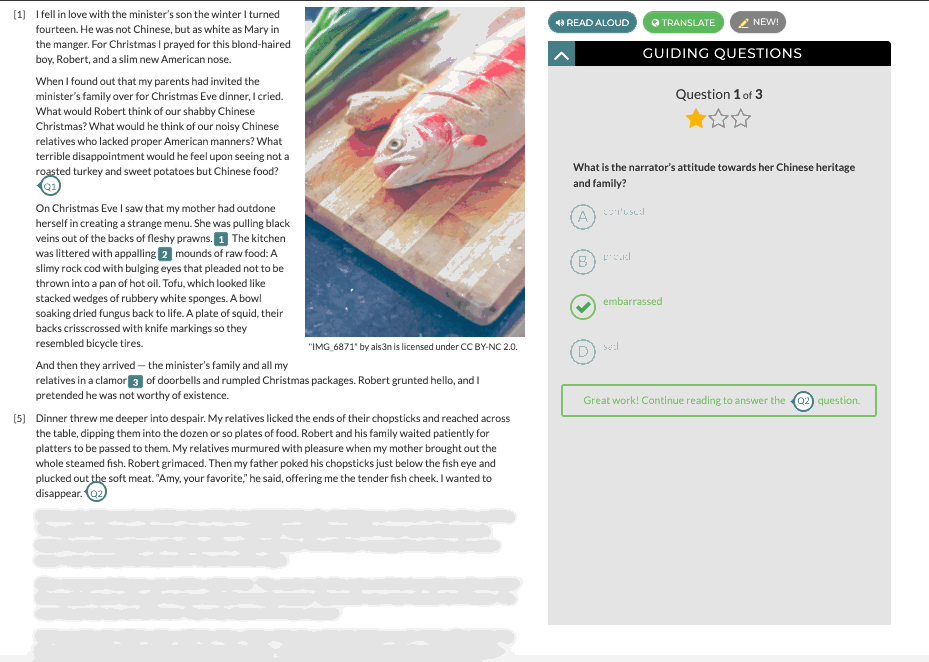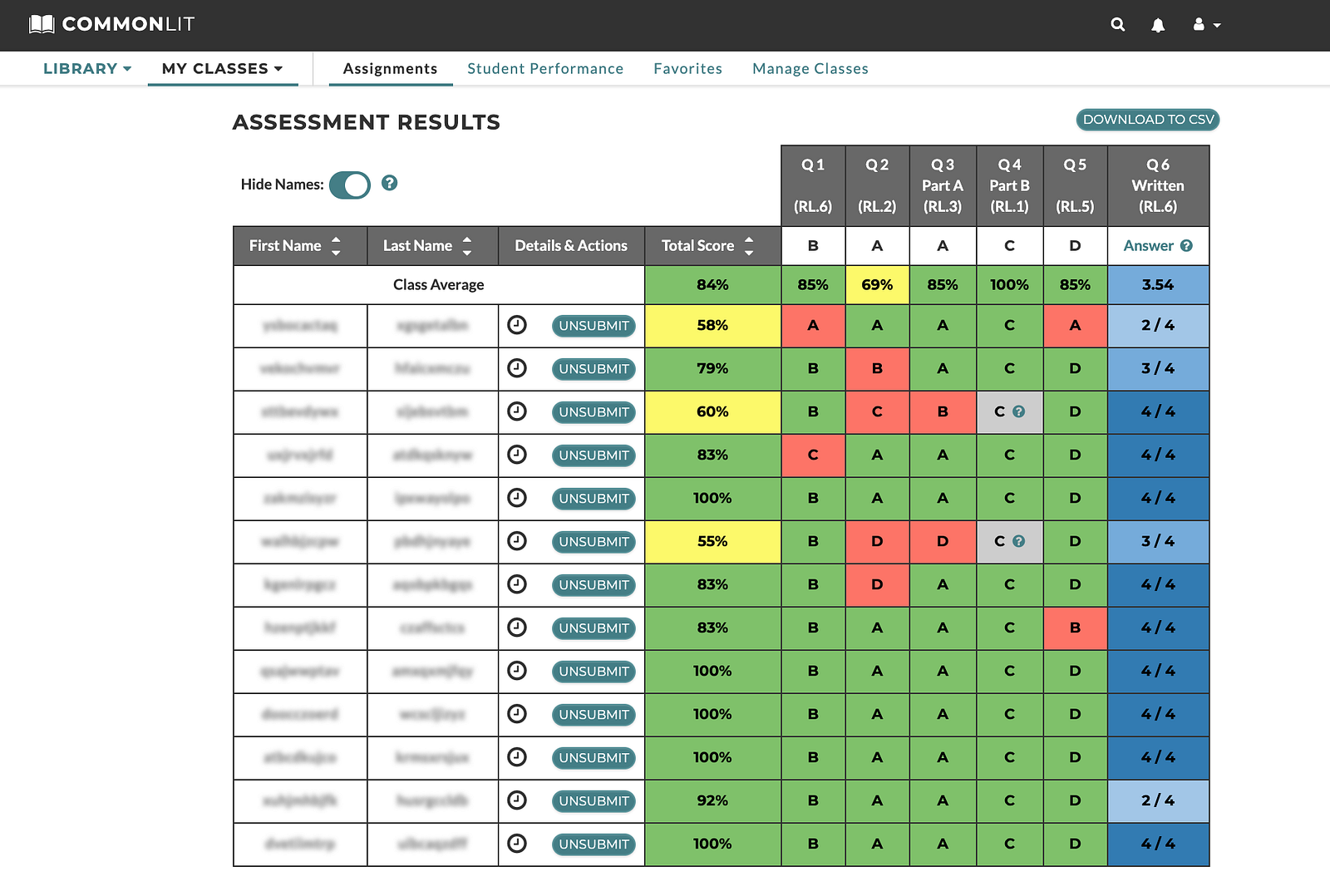Innovative ways CommonLit's literacy program supports differentiation in the classroom
Differentiation — a buzzword in education that can mean many different things. Small-group instruction. One-on-one support. Different versions of the same homework packet. The list goes on and soon the hours of data analysis and lesson planning pile up.
We all want to do the best by our students and give the most targeted, rigorous, and data-driven instruction we can.
Here at CommonLit, we hear you. Our goal is to make planning for differentiation as easy as possible so that you can focus on helping students. Here are four ways you can use CommonLit to support differentiation.
1. Turn on Guided Reading Mode for select students
Guided Reading Mode is a feature on CommonLit that supports student's reading comprehension. When you enable Guided Reading Mode, students are prompted to stop during reading to answer basic multiple-choice comprehension questions. These reading comprehension questions are meant to be “checks for understanding” that help struggling students slow down.

Guided Reading Mode helps with differentiation because you can enable or disable it for individuals, groups, or entire classes. It works great for small-group instruction because you can easily circulate the room and monitor comprehension while groups work at different paces.
On the Assignment Report Page, teachers can see how many attempts it took each student to get a specific guiding question correct. Guided Reading Mode is one of many intervention strategies for struggling readers that CommonLit's literacy program has to offer.

2. Encourage students to use the “Read Aloud” feature to improve fluency
Every CommonLit reading passage comes with the “Read Aloud” feature. This can be a helpful way to support students who struggle with fluency. The best part is that students can pause and restart the audio whenever they need — or repeat a section as needed.
In a differentiated classroom, students can use headphones to listen to their own text read aloud.
3. Facilitate small-group reading
After completing a few lessons on CommonLit, your student performance page will be full of data broken down by individual standards. Using data from Guided Reading Mode, reading assessment questions, and even student annotations, you can begin creating small-group and whole-group lesson plans.

Use this reading assessment data to group students by standards that they need extra support on. Then, filter our library by specific standards that you want your class to get extra practice on. Once you decide which lessons you want your students to complete, group students in a whole-group setting in smaller groups to complete the lesson together. Then, provide individualized attention and scaffolding to the students that need it most as you circulate around the room.
4. Support ELL students with our translation tool
Every CommonLit lesson can be translated into 25 different languages. Students can press the “globe” button in the top right corner of their assignment page, then choose their preferred language and start translating any paragraph. For students who are learning English, this feature can help support growing their English vocabulary and reading comprehension.

Additionally, CommonLit has a Spanish library with over 400 lessons, 93 of which are available in both Spanish and English (click here for our top recommendations). For students who are native Spanish speakers, teachers can support students by doing a first read in Spanish and then completing a close read with the English version. Research shows that students who are learning to read in a second language can use the comprehension skills they learned in their native language to support skills development in their new language.
Next Steps
The CommonLit team is here to support you and your students!
- If you are an educator who wants to learn more about how to use CommonLit.org, sign up for our free CommonLit webinars here.
- If you’re a school or district leader who wants to get more advice or training support for your team, please email partnerships@commonlit.org
- If you’re a teacher or parent who has questions about utilizing CommonLit's literacy program with your students, please email help@commonlit.org


